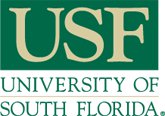Below is a summary of the abstract you submitted. Presenting author(s) is shown in bold.
If any changes need to be made, you can modify the abstract or change the authors.
You can also download a .docx version of this abstract.
If there are any problems, please email Dan at dar78@pitt.edu and he'll take care of them!
This abstract was last modified on March 20, 2023 at 5:45 p.m..

The SEA PHAGES program has submitted nearly 4,000 genomes to GenBank. If each phage genome contains 90 genes, this means that nearly 360,000 genes have been annotated. What is remarkable is that 70% of these genes are novel and have no known function. The SEA GENES program endeavors to clone phage genes into the inducible expression vector pExTra and complete phenotypic assays that assess their ability to confer cytotoxicity or immunity/defense to phage infection. The USF SEA GENES cohort has begun the analysis of genes from Mycobacterium phage Avani, one of only 3 F2 cluster Siphoviridae phage that infect Mycobacterium smegmatis. Avani has a 54,470bp genome and contains 107 protein coding genes. ORFs were amplified using PCR and gene size was confirmed by gel electrophoresis. Following confirmation of a pure PCR product, the genes were ligated into the pExTra01 plasmid by isothermal assembly. pExTra01 contains OriC regions for both E. coli and M. smegmatis, a Tet inducible promoter with an mCherry reporter gene and a kanamycin resistance gene. pExTra plasmids with Avani genes were transformed into M. smegmatis by electroporation and selected on kanamycin plates. Three M. smegmatis colonies were picked and dilutions spotted onto kan plates, or plates containing the inducer anhydrotetracycline hydrochloride (atc). M. smegmatis colonies containing positive and negative controls were also spotted on the plates. To date, 42 Avani genes have been evaluated. Nine of the genes show partial to full cytotoxicity. Toxic genes include three genes that are in the same PHAMs as toxic genes from phage Girr that was evaluated previously. Genes include: a potential immunity gene (gp51), a putative TM protein in the lysis cassette (gp37), and a small NKF gene (gp70). In addition, several DNA binding genes show cytotoxicity: the immunity repressor (gp53), excise (gp58), and a HTH DNA binding protein (gp28). Interestingly, the immunity repressor (gp46) from Girr was also toxic, but is not in the same PHAM as Avani 53. Finally, the protein encoded from Avani gene 51 is 98% identical to Girr 45. Both of these proteins are predicted to have a cleaved signal sequence and be extracellular, possible lipoproteins. When expressed in M. smegmatis, these genes confer an immunity phenotype to phage infection specific to the cluster. The mechanism of immunity is not clear, but it is intriguing that HHpred analysis suggests modest N-terminal folding to PDB5CY_A that is a lipocalin from Streptococcus pneumoniae involved in virulence. The identification of phage proteins with phenotypic outcomes is important in beginning to understand the function of NKF genes and also in how the genes in various functional cassettes (ex. lysis and immunity) may interact. We thank Danielle Heller, Vic Sivanathan and the SEA GENES team for support of this project.
